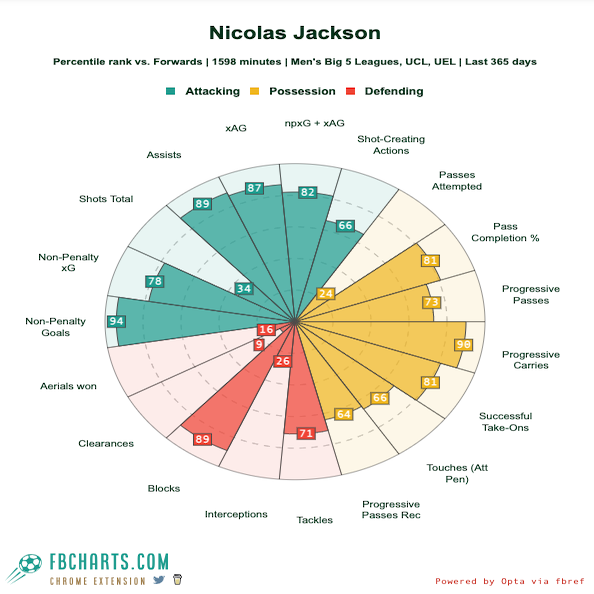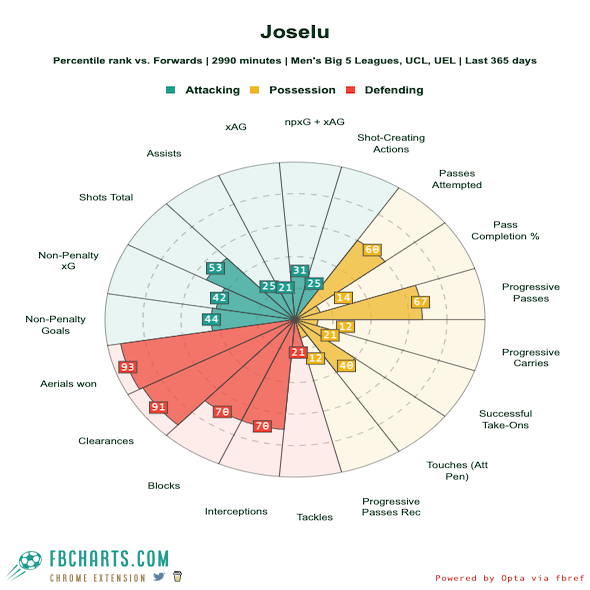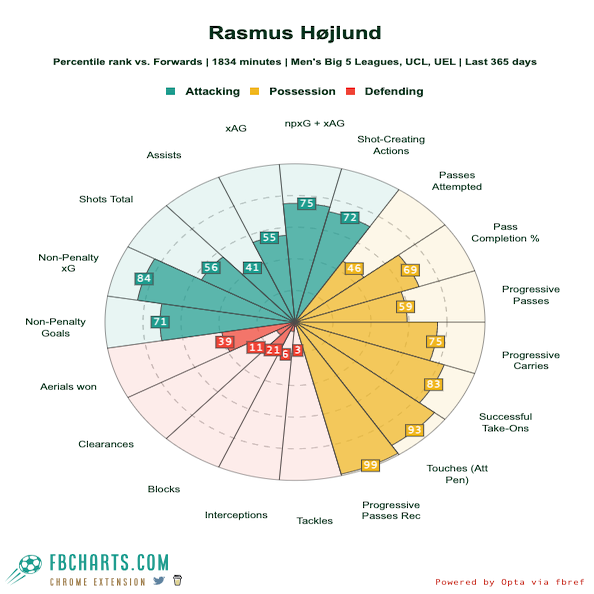We're only two weeks into the transfer window, and according to some estimates, there have already been 450-plus deals involving teams from Europe's Big Five leagues, with associated fees totaling up to about €2 billion.
It hasn't felt like that, though, has it?
One of the two biggest moves, Jude Bellingham to Real Madrid, was all but confirmed before the season ended, while the other, Declan Rice to Arsenal, both hasn't quite happened yet and also feels like it was completed a month ago. Beyond those two deals, nothing groundbreaking has happened quite yet.
A lot has happened, though.
- Stream on ESPN+: LaLiga, Bundesliga, more (U.S.)
Twenty-one players have moved for a transfer fee of at least €30 million. Ten years ago -- in an especially lively window that saw Gareth Bale join Real Madrid, Neymar join Barcelona, Edinson Cavani join Paris Saint-Germain, Mesut Ozil join Arsenal, Fernandinho join Manchester City, and the pair of Radamel Falcao and James Rodriguez join AS Monaco -- only 16 players moved for that much money over the course of the entire summer.
With 450-something players changing teams for billions of dollars across just 14 days, some trends have already begun to develop. Plenty is still likely to change in the next month and a half, but here's what we can learn from all the activity we've seen so far.
Everybody loves No. 8s
With player- and team-level trends, it's always difficult to pinpoint the driving factor behind them. Are all of Europe's best teams signing these hybrid attacker-slash-midfielders because all of Europe's best teams have started to seek out more conservative full-back play and therefore need their midfielders to pick up the creative slack lost when you don't have a defender overlapping all the way up to the other endline? Or are all of Europe's best teams signing these hybrid attacker-slash-midfielder types because the various systemic influences shaping the global development system -- an increased emphasis on tight-area technical skill (driven by Spain's dominance) and front-foot defending (driven by Germany's success) -- have produced an outsize number of these players?
Whatever the answer, the outcome isn't in doubt. Everybody is signing these kinds of players.
At Arsenal, Mikel Arteta looked across London, saw a Chelsea striker who was doing everything other than scoring goals, squinted his eyes, and convinced himself that Kai Havertz could play as a midfielder for an elite team. At Liverpool, after a season of looking quite leggy in the middle third, they've added Alexis Mac Allister from Brighton & Hove Albion and Dominik Szoboszlai from RB Leipzig for more than a combined €100 million, even after the late-season emergence of another promising player in the same mold: 22-year-old Curtis Jones. Manchester United wanted one of their own No. 8s so badly that they paid €64.2 million for Mason Mount, a player who had refused to sign a new contract with Chelsea and would've been available for a €0 transfer fee in a year. Tottenham Hotspur raided relegated Leicester City for James Maddison right at the beginning of the window. And while City lost one of their eights when Ilkay Gundogan went to Barcelona, they immediately replaced him with another one in Mateo Kovacic from Chelsea.
These players are not all the same. Kovacic exists closer to the traditional midfielder part of the spectrum, while Havertz sits at the other end, where he makes you question the entire concept of what a midfielder even is. If I had to come up with a unifying descriptor or identifier for all of these players, though, it'd be that you'd be upset if they were starting as part of your front three or at the base of your midfield consistently. Which is not to say that they couldn't do it in a pinch: Mount, Havertz and Szoboszlai all have experience playing in the attacking band, while all the other names can fill deeper midfield roles, especially against weaker opposition.
However, most of the time, they're all going to be asked to do a little bit of everything from that band between the base of midfield and the the attack: some pressing, some covering for the same-side full-back and winger, some ball progression, some off-ball runs into the box, some assists and some goals. Each one will have the sliders pushed more in certain directions -- based on their own tendencies and the tactics implemented by their manager -- but that's generally what they're all going to be asked to do. Perhaps the best way to think of these players is as a microcosm of whatever the manager is thinking. Look at who's playing as the eights, and you'll be able to tell how the team is trying to play.
The Saudi league isn't there yet
Although sovereign wealth has already transformed European soccer, it hasn't overtaken it. We still have all the major leagues and the UEFA Champions League. While the Premier League continues to outpace its rivals financially, the structure and hierarchy of the sport doesn't look that different than it did 30 years ago -- even if the face of ownership has drastically changed. The best leagues are the best European leagues; it's been that way for a while.
Mark Ogden explains why he thinks the attraction of the Saudi Pro League will only increase in years to come.
Not if the Public Investment Fund (PIF) has its way, of course. At least, you don't make an over-the-hill Cristiano Ronaldo the highest-paid athlete in the world if you don't have some ambitions of competing with the leagues where all the best players currently play. Or, well, maybe you do it on just one player without any grander long-term plans, but then they added the reigning Ballon d'Or winner Karim Benzema, along with N'Golo Kante and Roberto Firmino, two of the more decorated and respected players of the past decade, and a bunch of other notable names.
The Benzeama move, in particular, felt like a shock. But since the PIF announced it was investing in the four biggest clubs in the Saudi league -- and other government-related institutions invested in the other clubs -- the league, much like LIV golf, still hasn't been able to attract many in-their-prime stars. Based on the estimated valuations from Transfermarkt, the league has added 10 players with transfer values of at least €10 million:
- Sergej Milinkovic-Savic, Lazio: €50 million
- Ruben Neves, 26, Wolverhampton Wanderers: €40 million
- Karim Benzema, 35, Real Madrid: €25 million
- Marcelo Brozovic, 30, Inter Milan: €25 million
- Roberto Firmino, 30, Liverpool: €18 million
- Kalidou Koulibaly, 32, Chelsea: €15 million
- N'Golo Kante, 32: Chelsea: €15 million
- Jota, 24, Celtic: €13 million
- Edouard Mendy,31, Chelsea: €12 million
Most of those players are still good enough to contribute at the highest level, but the majority of them are still well past their bests.
Milinkovic-Savic probably could've contributed to a bigger club than Lazio, but it's unclear that any of them wanted him now that he's 28. He probably missed his window to have a chance at starting for a Champions League club that could pay him more than Lazio. Neves is in the middle of his prime, but he never quite developed into an elite-level player. He maybe could've joined one of the super-clubs as a bunch player and earned a salary increase, but Wolverhampton or any other middling Premier League club could pay him just as much as say, an Inter Milan or a Real Sociedad -- clubs that, competitively, would be a step up. Jota, meanwhile, was playing for Celtic, he wasn't likely to ever make it to a top European club.
In other words, we're yet to see the Saudi league "disrupt" European soccer by prying away key stars in the middle of their primes. In fact, it's mostly been an economic -- massive, glowing emphasis on "economic" here -- positive for European soccer so far: older or middle-tier players can secure massive paydays, while big clubs now have a place to send the players who they paid a lot of money but don't want anymore or wouldn't have been able to profit on. While the league's reported interest in all three of Liverpool's starting midfielders from two seasons ago certainly poses some new team-building questions for the club, Fabinho, Jordan Henderson and Thiago all, individually, fit the same mold of the players the league has already added.
Where did all the forwards go?
Last summer, Erling Haaland, Darwin Nunez and Robert Lewandowski all moved clubs for massive fees and/or wages. Especially with the successes of Manchester City and Liverpool in 2021-22, it seemed like the traditional striker was dying -- until both clubs told us we were wrong. Toss in the rise of Napoli behind Victor Osimhen this past season and Harry Kane tying his career-high in goals in a single campaign, and the sport's marquee position ... was still the marquee position.
So far this window, though? Not quite. Among moves that aren't just finalizations of loans with options to become permanent transfers, the most expensive center-forward has been Chelsea's €37 million move for Villarreal's Nicolas Jackson. He's a really interesting player who manages to be pretty productive and effective despite not touching the ball all that much:

I like this signing a good deal more than almost every other signings Boehly & Co. have made thus far, but why isn't there more movement elsewhere? Especially considering after the departure of Benzema, Real Madrid, one of the richest clubs in the world, now have a massive hole up top. I'm sorry, but Joselu just isn't likely to cut it:

Rather than implying anything about the importance of the position, it seems like there's a blockage in the market. Real Madrid want Kylian Mbappe, but it's unclear if Kylian Mbappe wants to leave Paris Saint-Germain before his contract runs out. (And no, PSG can't just make him leave this summer. Someone tell Nasser Al-Khelaifi that's not how contracts work.) So, that's left Real Madrid kind of just staring at Mbappe and hoping something will budge, rather than pivoting toward, say, Kane, like earlier reports suggested they might before news broke that Mbappe was planning on running down his PSG contract, again. Bayern Munich want Kane, but they've never paid the amount of money for a single player that it seems like Tottenham want for Kane. If that deal does go through, it'd be quite the shift in how the club does business. Osimhen, according to the Napoli president, is going to be with the club next season. It doesn't seem like Manchester United, who are badly in need of a striker, are interested in him; they've instead shifted their focus toward Atalanta's Rasmus Hojlund, who's a different type of player, in a tier of team that won't cause any other ripple effects across the top of the market.

The most likely end to any transfer rumor is that it doesn't happen; countless small little things can stop a move from coming together, while every small little thing has to line up properly for a move to happen. But given that a bunch of these rumors are interconnected and that there are a lot of individual rumors, my guess is that one of the big names changes clubs at some point, it leads to changes elsewhere, and we see a bunch of other center-forwards on the list of most expensive transfers by summer's end.
PSG are doing something different -- even if they still don't know what they're doing
Here are PSG's senior-level signings so far, listed in order of the transfer fee:
- Manuel Ugarte, 22, defensive midfielder, Sporting CP: €60 million
- Lucas Hernandez, 27, center-back/full-back, Bayern Munich: €45 million
- Lee Kang-In, 22, midfielder, Mallorca: €22 million
- Marco Asensio, 27, attacker, Real Madrid: no fee
- Milan Skriniar, 28, center-back, Inter Milan: no fee
What do they all have in common? Well, none of them would fit into a picture or a post like this one:
A big part of what's doomed PSG in the past is that they have too many stars. They, funnily enough, have basically built a team as if they were playing a video game, but that falls apart when you get matched up against the other biggest clubs in the world. These other teams have stars, but then they have other players who support and complement their stars, and it adds up to a cohesive system. Manchester City and Real Madrid and Bayern Munich have players who can win a game by themselves, but they also have structures that don't collapse when put under the tiniest bit of pressure.
These signings suggest that PSG are aware of that. Ugarte is a ball-winning center mid who's nothing special on the ball -- yet. Hernandez is a conservative, defensive full-back. Lee is a midfielder who doesn't really touch the ball. Asensio never fulfilled his early potential, but he's been one of the better off-the-bench players in Europe in the past few seasons. And Skriniar is a big, unfancy, gets-the-job-done defender.
These are the kinds of players who could provide the base for PSG's stars to work off of. It's just, well, we don't even know if their biggest star is going to be at the club next season.
America!
I'm old enough to remember when there was a somewhat-agreed-upon bias against American players in Europe. Not anymore!
Ricardo Pepi had what looked to me like an underwhelming season in the Dutch league -- 0.4 non-penalty goals+assists per 90 minutes in an attacker-friendly environment, backed up by even worse underlying numbers -- and now he plays for PSV Eindhoven, who will be in the Champions League. Brenden Aaronson scored one goal in 36 Premier League games for a team that got relegated ... and he'll be playing in the Champions League next season for a Bundesliga team. Christian Pulisic also scored one goal last season and hasn't reached the 2,000-minute mark in a single campaign since 2018 ... and he's joining a club that's won Serie A and reached the Champions League semis in the past two years. Timothy Weah has never started more than 18 games in a season ... and now he plays for Juventus.
On top of that, both Weston McKennie and Tyler Adams appear wanted by a number of Big Five clubs. Same goes for Yunus Musah. And then Folarin Balogun looks likely to either leave Arsenal for a Champions League club somewhere else in Europe or he'll just, you know, be on Arsenal.
There's a lesson here, and it's that there are more good young American soccer players than ever before. No longer do we live in an era where every weekend feels like it could make or break the careers of the handful of Americans playing in Europe and then also destroy the current prospects of the USMNT. No, instead, just think about what happened this past year: Almost every top American player had a "down" club season, and yet the team played really well at the World Cup and top clubs across Europe still want to employ all of those players. That's progress, people.
